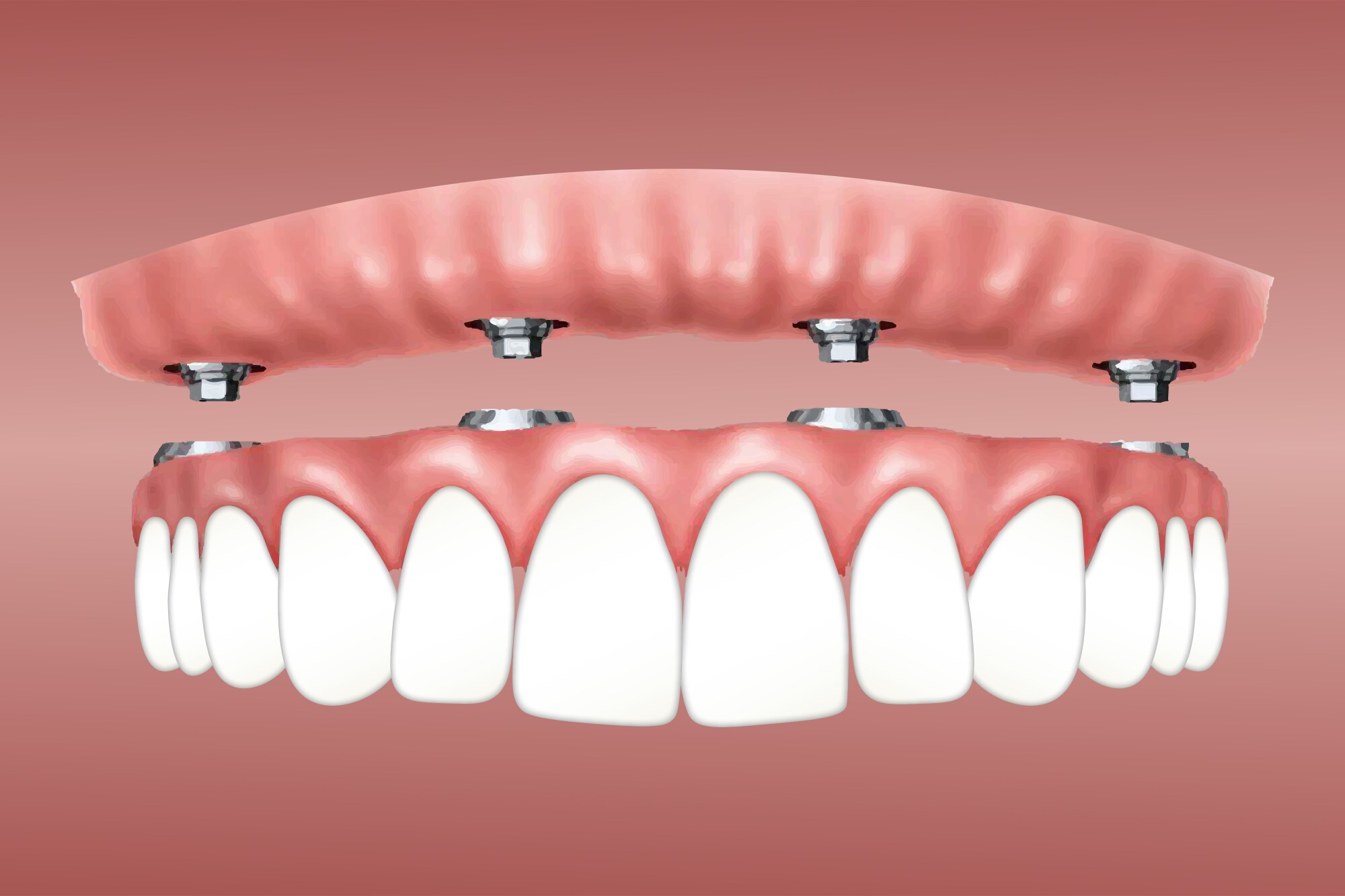The Ultimate Guide To Dental Sense
Table of ContentsThe 2-Minute Rule for Dental SenseDental Sense - An OverviewGetting My Dental Sense To Work3 Easy Facts About Dental Sense Explained
are medical gadgets surgically dental implanted into the jaw to bring back an individual's capability to chew or their appearance. They offer support for fabricated (phony) teeth, such as crowns, bridges, or dentures. When a tooth is lost due to injury or disease, an individual can experience problems such as quick bone loss, malfunctioning speech, or changes to chewing patterns that result in pain.Oral dental implant systems are composed of a dental implant body and oral implant joint and may additionally consist of a joint addiction screw. Root canal procedure. The oral implant body is surgically placed in the jawbone in area of the tooth's root. The oral implant abutment is generally connected to the dental implant body by the abutment fixation screw and extends with gums right into the mouth to support the connected synthetic teeth
(https://myanimelist.net/profile/dentalsense1)Framework of The Oral Implant System picking dental implants, speak to your dental provider concerning the potential advantages and dangers, and whether you are a candidate for the procedure. Things to take into consideration: Your overall health is a crucial consider identifying whether you are a great candidate for dental implants, for how long it will certainly take to heal, and the length of time the implant might stay in location.
Smoking cigarettes may impact the recovery procedure and reduce the long-term success of the implant. The healing process for the implant body might take a number of months or longer, during which time you generally have a short-lived abutment in location of the tooth. the dental implant treatment: Meticulously follow the dental hygiene guidelines provided to you by your oral supplier.
Dental Sense for Beginners
Implant failure can lead to the requirement for another operation to deal with or replace the dental implant system. Brings back the ability to chew Recovers cosmetic look Helps maintain the jawbone from shrinking due to bone loss Preserves the wellness of the bordering bone and gum tissues Aids keep nearby (nearby) teeth steady Enhances lifestyle Damages to surrounding natural teeth throughout dental implant placement Injury to the surrounding cells during surgical procedure, such as sinus perforation Injury throughout surgical treatment (for example, fracture of bordering jawbone) Poor function, such as seeming like the teeth do not bite with each other normally A sensation that the tooth hangs or turning in area arising from an abutment screw loosening Implant body failure (looseness of the implant body) due to systemic infection, which may be more probable in clients with unrestrained diabetes because of neighborhood infection in bone and gum directory tissues supporting the dental implant body as a result of postponed healing, which may be extra most likely in clients who smoke Difficulty cleaning up the gums around the implant, resulting in bad dental hygiene Neglected gum disease Post-surgical numbness as a result of nerve impingement or damage Constantly inform health treatment service providers and imaging professionals that you have dental implants prior to any magnetic vibration imaging (MRI) or x-ray treatments.
FDA is not familiar with any kind of adverse occasions reported for MRI or x-ray treatments with dental implants. Oral implants systems are usually constructed from products that follow worldwide consensus criteria of the International Company for Standardization (ISO) or ASTM International. These standards have details of what makes a secure product.

A dental implant is a framework that replaces a missing out on tooth. With screw-like tools, the surgeon inserts a dental implant into the jawbone, and it works as a support for a synthetic tooth, called a crown. A gadget called a joint links the fabricated tooth to the oral implant. The crown is tailor-made to fit the individual's mouth and match the color of their teeth.
Dental Sense Can Be Fun For Anyone
Some individuals are not qualified for dental implant surgical treatment. It is for dental surgeons to run on individuals with: intense illnessuncontrollable metabolic diseasebone or soft cells condition or infectionIf these issues are dealt with, a person can have the surgical procedure. In, oral surgeons avoid operating people with: If individuals with any one of the above undergo oral implant surgical procedure, there is a higher threat of the dental implant failing.

Oral dental implant surgical procedure is an individualized procedure. It's not the same for every person. The following offers a general overview of what you can anticipate your dental expert, oral specialist, periodontist or prosthodontist to do: Place the dental implant surgically. Provide you time to heal. Connect the message and final crown, bridge or denture.
Next, your cosmetic surgeon will very carefully place the dental implant right into your jaw. Your doctor will rearrange your gums and shut the laceration with stitches. If your dental implant is near the front of your mouth, your dental expert will certainly make a short-lived tooth for you to wear up until you heal. That method, you won't have a gap in your smile while you recover.
Examine This Report on Dental Sense
Throughout the recovery phase, your jawbone must fuse to the dental implant. This procedure can take anywhere from three to 9 months.
Once your implant heals, your dental professional can affix the joint (tiny port article) and your last reconstruction (crown, bridge or denture). This normally takes about one hour to complete and might call for a 2nd minor surgery. You should not really feel any kind of pain during your oral implant procedure since your company will utilize medication to numb your periodontals.